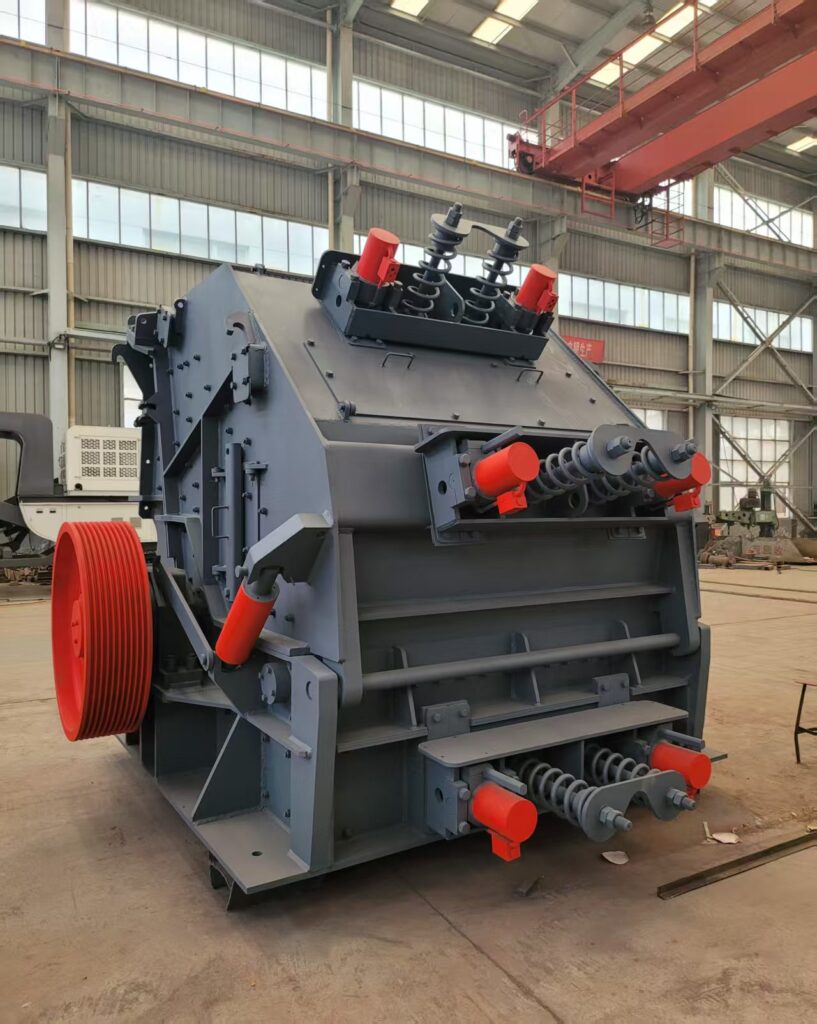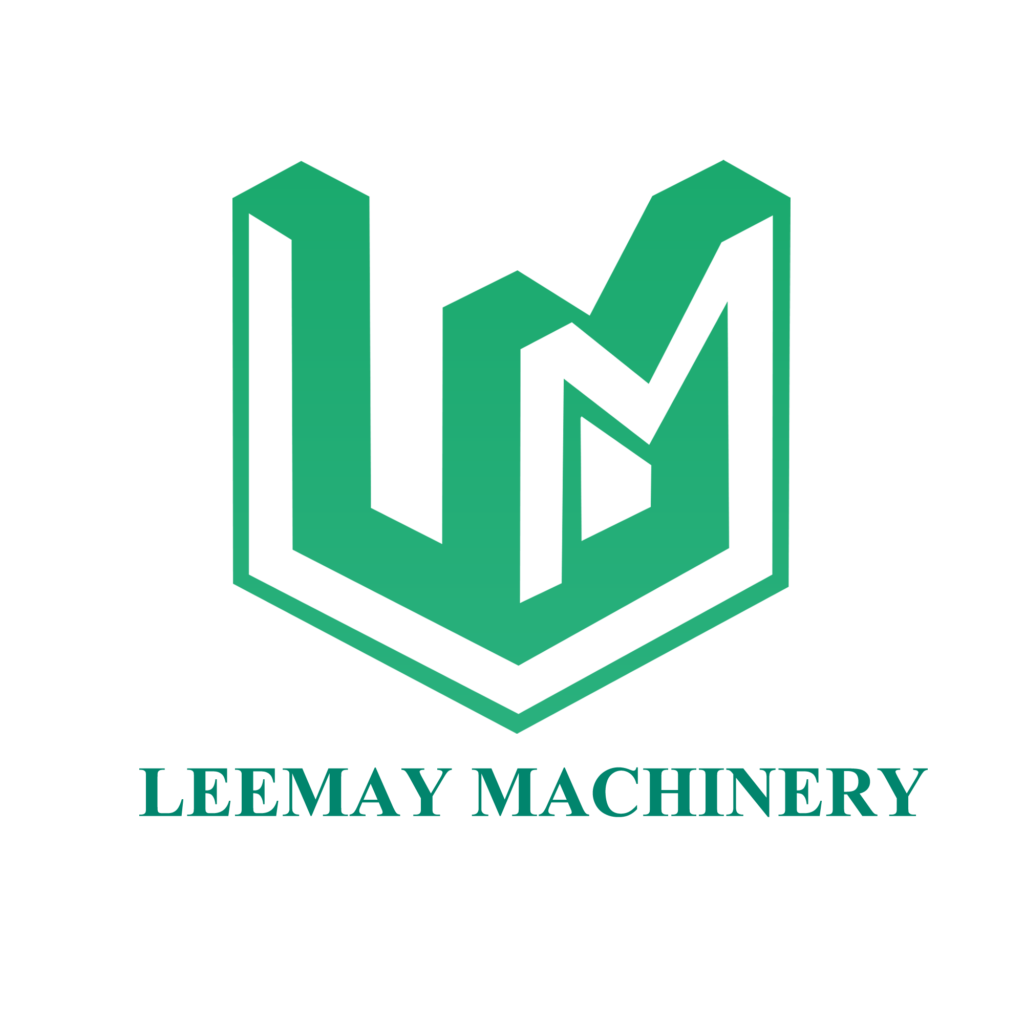In the field of ore and stone processing, jaw crushers, cone crushers, and impact crushers are all star equipment, each with its own advantages. So how do you choose the one that best fits your production needs? Today, Leemay Machinery will share insights from multiple perspectives, including working principle, applicable materials, efficiency, output shape, equipment cost, and maintenance.

- Working Principle
Jaw Crusher: Scientifically known as a jaw crusher, it operates with a curvilinear extrusion mechanism. The motor drives the belt and pulley, which in turn move the eccentric shaft to make the movable jaw move up and down. When the movable jaw rises, the angle between the toggle plate and the movable jaw increases, pushing the jaw plate closer to the fixed jaw plate, thereby compressing and crushing the material between the two plates. As the movable jaw descends, the angle decreases, and under the action of the pull rod and spring, the movable jaw plate moves away from the fixed jaw plate, allowing the crushed material to be discharged from the bottom of the crushing chamber. This cycle repeats to achieve continuous crushing. Much like an animal chewing with its upper and lower jaws, the jaw crusher “bites and breaks” large chunks of material during primary crushing.
Cone Crusher: It works on the lamination crushing principle. The motor drives the cone component through a pulley or coupling and a transmission shaft, causing it to perform a gyratory motion around a fixed point under the force of the eccentric sleeve. As a result, the crushing wall of the cone crusher sometimes approaches and sometimes moves away from the surface of the concave (mantle) fixed on the adjustment sleeve. Within the crushing chamber, the material is continuously subjected to impact, compression, and bending forces, thereby achieving crushing. Figuratively speaking, it functions like a rotating “millstone,” continuously grinding and crushing the material.
Impact Crusher: It adopts the impact crushing principle. Driven by the motor, the rotor rotates at high speed, and when the material enters the crushing chamber, it is struck and broken by the blow bars on the rotor. The material is then thrown against the impact plates for secondary crushing, and finally discharged from the outlet. In this process, the material is repeatedly impacted between the blow bars and the impact plates, much like being bounced and shattered inside a “spring-loaded room.”
2. Applicable Materials
Jaw Crusher: Known as an “all-rounder,” it can crush a wide range of materials with a compressive strength of up to 320 MPa. Whether it is soft materials like gypsum and shale, or harder stones such as granite and basalt, it handles them with ease, and is commonly used for the primary crushing of large-sized materials.
Cone Crusher: It excels at handling high-hardness materials such as iron ore, copper ore, and river pebbles. For crushing scenarios that require fine processing with strict demands on product size uniformity and particle shape, the cone crusher delivers outstanding performance and is commonly used for secondary and fine crushing operations.
Impact Crusher: It is more suitable for medium- to low-hardness materials such as limestone, bluestone, and coal gangue. Because its crushing process relies on impact force, wear on spare parts increases significantly when dealing with overly hard materials. Therefore, it shows the greatest advantage when processing softer and more brittle materials, and is widely used for secondary and fine crushing—especially in applications where high-quality particle shape is required.
3. Discharge Size and Particle Shape Difference
1) Discharge size
Jaw Crusher: As a primary crushing device, its discharge size is relatively large, generally ranging from 5-500 millimeters, depending on the equipment model and the adjustment of the discharge opening.
Cone Crusher: With multiple crushing chamber types, it can achieve coarse, medium, fine, and ultra-fine crushing. The discharge size range is wide, and it can produce finer sand, with a minimum size of just a few millimeters.
Impact Crusher: The discharge size can be controlled by adjusting the gap between the impact rack and the rotor. It usually meets the requirements of medium and fine crushing, with discharge sizes generally adjustable within the range of 0–60 mm.
2) Particle shape
Jaw Crusher: The crushed material tends to have an irregular particle shape with more needle-like and flaky particles, which is determined by its extrusion crushing mechanism.
Cone Crusher: Through lamination crushing, the finished product has relatively good particle shape and more uniform granularity. However, compared with the impact crusher, the proportion of cubic-shaped particles is slightly lower.
Impact Crusher: It performs excellently in terms of particle shape, producing mostly cubic products with fewer sharp edges. However, it also generates relatively more fines, making it highly favored in industries such as construction aggregate production where strict requirements on particle shape are imposed.
4. Different production efficiency
Jaw Crusher: Simple in structure and reliable in operation, but it is an intermittent crushing device. Its production efficiency is greatly affected by factors such as material properties and feeding uniformity. Generally, the output of a small jaw crusher may be only a few tons per hour, while that of a large jaw crusher can reach several hundred tons per hour.
Cone Crusher: A continuous crushing device with relatively high production efficiency. Especially when processing high-hardness materials, its advantages of strong crushing force and low energy consumption can be fully utilized. The output typically ranges from tens of tons to over a thousand tons per hour, depending on the equipment model and configuration.
Impact Crusher: Also a continuous crushing device with relatively high crushing efficiency. When processing medium- to low-hardness materials, it can quickly reduce the material to the desired size, with outputs generally ranging from tens to several hundred tons per hour. However, if the material hardness exceeds its applicable range, equipment wear will accelerate, which in turn affects production efficiency.
5. Equipment Cost and Maintenance
1 ) Equipment cost
Jaw Crusher: With a relatively simple structure and lower manufacturing cost, small-sized jaw crusher may cost only several thousands US Dollars, while large-sized jaw crusher ranges from 100 thousand US Dollars to more higher price. The initial investment pressure is relatively low.
Cone Crusher: Due to its complex structure and high-precision manufacturing requirements, cone crusher cost is higher, usually ranging from several hundred thousand to over one million, resulting in a larger upfront investment.
Impact Crusher: The price falls between that of the jaw crusher and the cone crusher. The specific cost varies depending on equipment specifications, brand, and other factors.
2 ) Maintenance
Jaw Crusher: With strong wear resistance of components and a relatively simple overall structure, it has a low failure rate. Daily maintenance mainly focuses on replacing wear parts such as jaw plates, resulting in relatively low maintenance costs. However, since its crushing method is extrusion, its energy consumption is relatively high, and the long-term electricity cost should not be overlooked.
Cone Crusher: Based on the lamination crushing principle, the wear of vulnerable parts is relatively minor, keeping maintenance costs low. However, due to its complex structure, once a failure occurs, the repair process can be more difficult, requiring highly skilled technicians, which may lead to increased repair costs.
Impact Crusher: Internal wear parts such as blow bars and impact plates wear out faster and need regular replacement, which raises maintenance costs. On the other hand, its overall structure is not overly complex, making repairs relatively easier. Choosing high-quality wear parts can help reduce maintenance costs to some extent.
These are some of the key factors to consider when selecting stone crushing machines. We’ve analyzed 5 aspects: working principle, applicable materials, working efficiency, product particle shape, and equipment cost & maintenance. As a manufacturer with over 30 years of experience, Leemay Machinery produces jaw crushers, cone crushers, impact crushers, and other crushing equipment using high-quality materials and advanced technology. With robust structures and excellent wear resistance, our machines can withstand heavy-duty operations and ensure stable production. Not only are our machines of reliable quality, but our after-sales service is also guaranteed. If you have more inquires about production line configuration or equipment selection, feel free to contact us for detailed information.

Leave a Reply